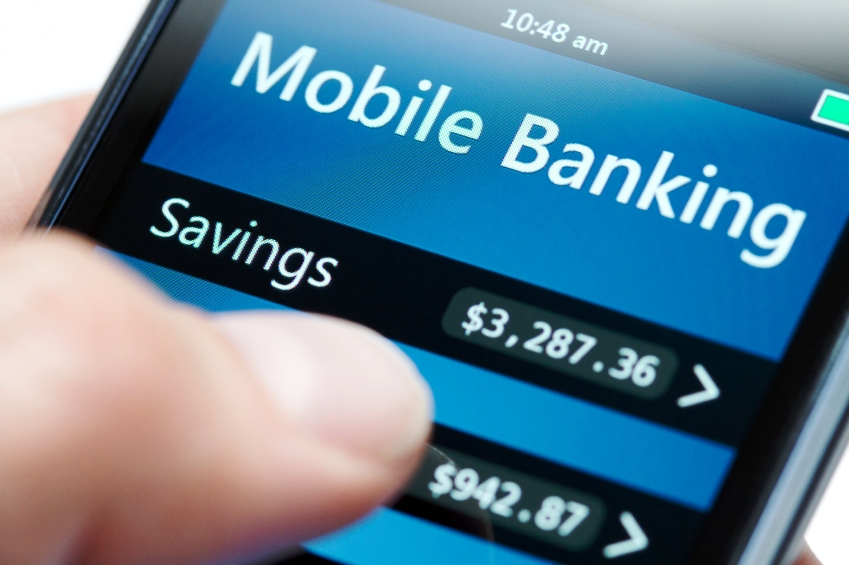 Mobile Banking Users Will Double and Hit a Quarter of the World’s Population By 2019
Mobile Banking Users Will Double and Hit a Quarter of the World’s Population By 2019
- Exponential growth in mobile banking is driving an era of ‘Open Banking’, according to a KPMG report using primary survey data supplied by UBS Evidence Lab
- Large banks are already having to acquire technology start-ups to keep-up with the rapid pace of change and the growth of challenger banks
- Challenges including cyber-security and the lack of collaboration with developers, is preventing banks to innovate and capitalise upon ‘Open Banking’
The number of mobile banking users globally is forecast to double to 1.8bn, over 25 per cent of the world’s population, in the next four years, according to research by KPMG using primary survey data supplied by UBS Evidence Lab.
The Global Mobile Banking Report, finds that while mobile is already the largest banking channel by volume of transactions, its adoption by new customers is now entering an exceptionally rapid phase. It also suggests that mobile banking and payment systems are increasingly being integrated with other technologies, driving an era of ‘Open Banking’.
The report warns that banks who do not have clear mobile banking strategies will lose customers and cross-sell opportunities in the short-term, as well as risk jeopardising competitive advantage.
In the short-term, the availability of mobile banking services is a key indicator when consumers choose to switch banks, and the report highlights a clear link between a strong mobile proposition, customer satisfaction and advocacy. However, mobile bank users, who are typically in the mid to late thirties, are the most likely to switch banks, suggesting that even an effective mobile banking offering is not enough by itself to retain these higher value customers.
In the long-term, the report suggests that as mobile banking technology is driving an area of ‘Open Banking’, where consumers can bank within context, across a variety of channels, operating systems and devices, including phones, tablets and wearables. For example, as a consumer holds-up their phone to a television in a store, an augmented reality app can recognise it and provide information including reviews and credit options.
The report highlights three key areas for banks to focus on in order to take advantage of the surge in mobile banking and therefore prepare for the ‘Open Banking’ era:
- Expand mobile banking services – Banks should investigate the potential of value added services, suggesting that virtual customer support can bring the personal touch of a branch to a handset, but banks need to tread carefully. For example, mobile banking offers many opportunities for cross-selling other financial services, but unwanted sales messages can ‘invade’ what the report calls ‘device intimacy’ and lead to customer complaints, reduced usage or even switching to another provider. On the other hand, consumers value personalised support via mobile services. The report urges banks to explore areas such as virtual support, social media banking and ‘life tools’ such as cloud storage. Furthermore, banks should also consider mobile-enabled technologies such as wearables and augmented reality as they proliferate.
- Banks need to be more open – While banks offer Application Program Interfaces (APIs), allowing third-party developers to develop such technology, the report highlights that there needs to be greater collaboration between the banks and developers. Whatsmore, even as banks invest unprecedented amounts in mobile and other technology-led capabilities, challengers unencumbered by legacy IT infrastructure are already one step ahead. To stay ahead, large banks are increasingly acquiring technology start-ups and investing in incubators.
- Invest in security – Innovation must be underpinned by rock-solid security. Banks are urged to heavily invest in technologies that will evolve and protect against future threats, as well as tackle current pressures from malware and social engineering. Forty per cent of consumers, cited concerns about entering card details in mobile devices, and the possibility of losing a handset ranks highly among the list of worries. Banks find themselves having to both protect the customer, while at the same time providing seamless and speedy access to their services to ensure greater consumer satisfaction. Biometric apps and fingerprint scanning are earmarked as ways to bolster the security of mobile banking, whilst ensuring ease of access – only a handful of the main banks assessed in the research currently offer this service.
David Hodgkinson, KPMG’s UK digital and mobile banking lead and the report’s author, said: “Banks must adapt or die. Mobile banking is clearly supplanting all other channels as the main portal between the bank and the consumer. Many banks have already risen to the challenge and invested in new infrastructure and pioneering initiatives, but others must follow suit and commit to building both immediate propositions and on-going capability to keep up with the pace of change.
“This new, exciting phase of mobile banking innovation, spearheaded by new market entrants as well as pioneering banks, will be a rollercoaster. Banks must overcome substantial infrastructural challenges, and reconcile consumers’ appetite for ease of use with greater security. Boldness will be required to overcome these challenges, and the only sure-fire winner will be the consumer.”
To read the full background click on this link





















